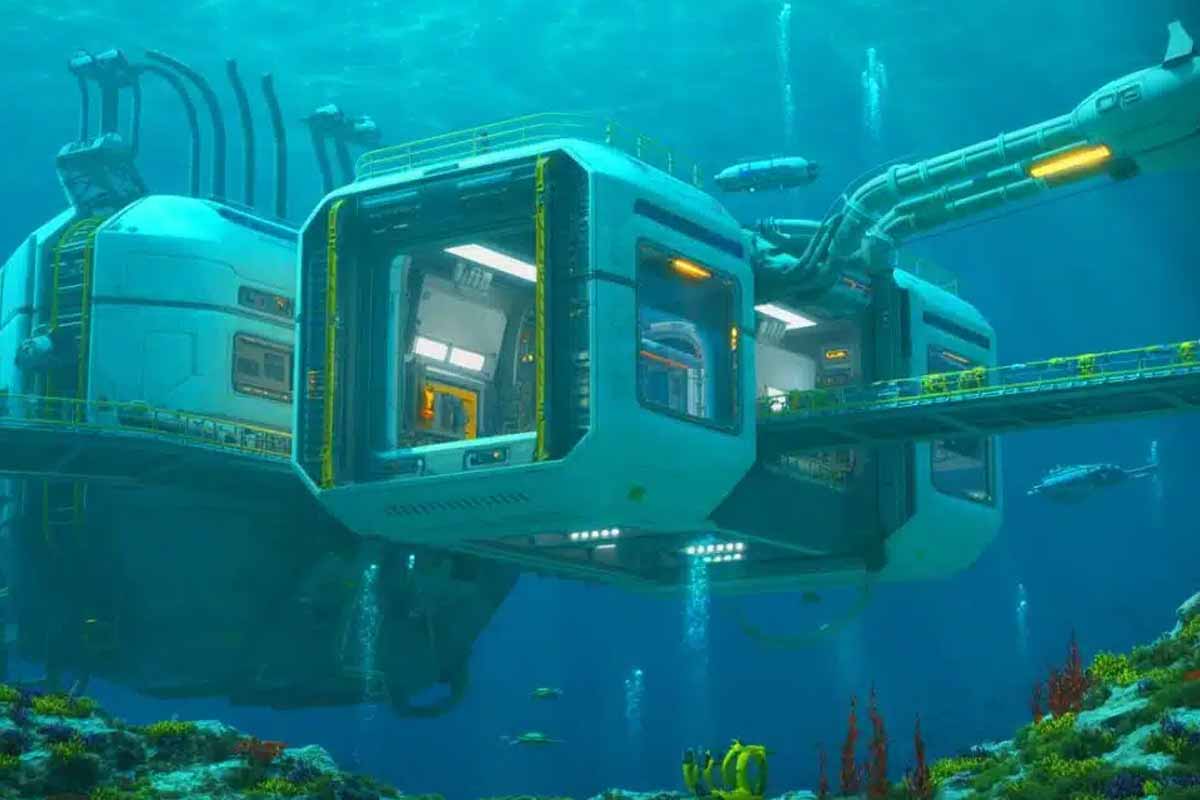China underwater station work is unfolding far below daylight, quiet and deliberate. Picture engineers breathing through checklists while the ocean presses in from every side. No drama, just steady hands and a plan built to endure. Science, energy, and national will share the same airlock. If you listen closely, you can hear the hum of a new frontier.
Blueprint in the dark
Two thousand meters down, vents breathe hot, mineral-rich water into blackness. Life crowds these oases, strange worms, heat-loving microbes, creatures that glow without sun. Researchers want years of data, not weekend snapshots. Stable chemistry logs, micro-quakes, microbial shifts; the slow tracks that reveal patterns. China’s academy signed off on a base built like three docked space modules.
Redundancy rules everything: heat stabilized, filtration strict, waste routed with zero guesswork. Maintenance gets choreography, not improvisation. Each handoff is rehearsed until it feels boring in the best way. That’s how gear survives pressure that can crush a car. In this setup, the phrase China underwater station isn’t a headline. It’s a promise of discipline where mistakes get punished fast.
China underwater station
Daily life inside will be oddly ordinary, which is the point. Oxygen balanced, humidity steady, filters swapped before they clog. Automation handles routine; people handle the weird edge cases. Alerts don’t shout into the void they land with the right team. Power fails gracefully, because panic wastes oxygen and time. Beyond the habitat, a fiber-optic spine links sensors, vehicles, and shore labs.
Autonomous subs sweep terrain and currents. Crewed ships bring supplies, retrieve packages, and go when seas allow. You might see the Mengxiang drill ship in the rotation, muscling through heavy missions. All streams fold into a four-dimensional grid—space and time, stitched together. When a value drifts, routes change, tasks shuffle, models update. Inside that loop, the China underwater station acts like a nerve center, not a bunker.
How the system learns, without breaking what it studies
This place is built to watch first and touch last. Robots map fragile zones before a human hand gets near. Teams log coordinates, durations, footprints, the paper trail that earns trust. If thresholds trip, everything stops, and methods adjust. Restraint isn’t a posture; it’s policy. Biologists chase enzymes born under brutal heat and pressure. Those molecules might help medicine or industry one day. Use cases get defined early, with ethics threaded into checklists.
Quiet periods let sites recover, like closing a meadow after fieldwork. Sensors track turbidity, temperature, flow, and the regular cast of species. Long time series beat single bright moments, every time. Beneath the headlines, the China underwater station backs curiosity with careful proof.
Timelines, energy angles, and the ore underfoot
Milestones aim for full operations around 2030, with staged tests along the way. Fiber links anchor the network; smart software keeps nodes in sync. Buffers catch spikes so raw signals don’t smear into noise. Uptime matters as much as speed, maybe more. Resource maps are part of the draw. Methane hydrates sit in volumes that make planners lean forward.
Trials will probe stability, leakage risk, and net yield. Engineers refine capture rigs and compare outputs until a story holds. The seafloor also carries cobalt and nickel in promising concentrations. Batteries, satellites, and defense hardware ride on those metals. Analysts weigh cost curves, supply routes, and rights frameworks with fresh data. With each survey, the China underwater station cuts guesswork down to size.
Strategy, neighbors, and the patience to play long
Capacity changes the conversation more than speeches ever will. A working base at depth sends a clear message: we can do this. Rivals adjust timelines. Partners appear where interests rhyme and risks align. A template could emerge, tight monitoring, transparent audits, targeted use. The rub is simple: access versus preservation.
Teams will track biodiversity, sediments, and chemical plumes, then adapt in real time. Rare species and keystone roles get priority protection, no debate. Standards harden when evidence piles up, which is how norms grow teeth. Industry gains muscle as tools and talent mature at home. Science moves ahead on extremophiles and plate dynamics; robotics learns from the grind. The China underwater station keeps the through line steady, earn credibility with results.
Inside the habitat, outside the noise
Life down there will look plain at first glance. Check a gauge, log a sample, share a quick joke over instant noodles. That quiet is hard-won. It comes from systems that fail safely and people who respect limits. It turns a volatile setting into a workable address. Back on shore, planners fold the new numbers into patient models. No gold rush, no swaggering quotes. Just charts that sharpen month after month. If the station holds its promise, gains will feel earned, not hyped.
Ecology gets watched like a heartbeat. Energy cases get built brick by brick. Security follows proof, not press releases. That’s the work worth backing, the drift from talk to track record. And that’s where the China underwater station will either rise or get retired by the sea.
